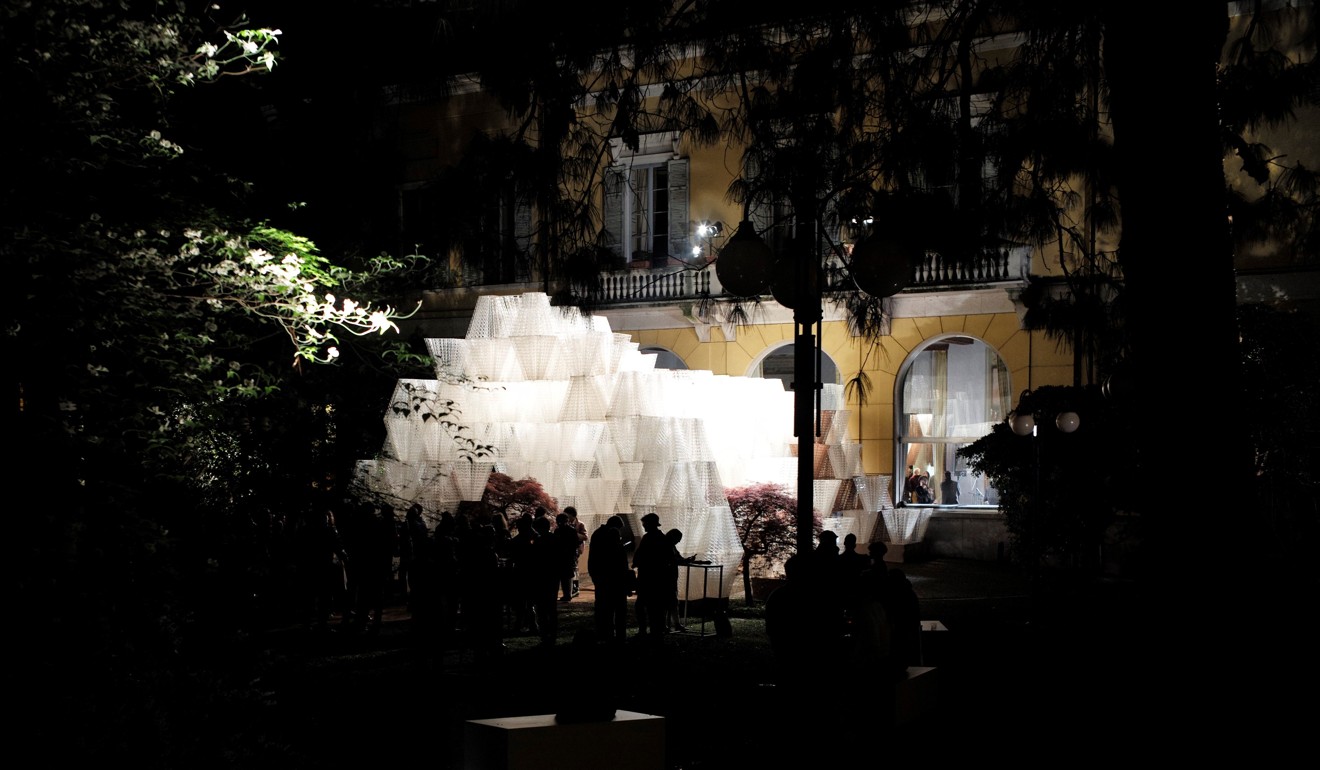
COS: what it stands for and how Coco Chanel is surprising inspiration for label’s Scandinavian minimalism
- Brand known for its Scandinavian minimalism and architecturally inspired looks operates like a luxury brand at an affordable price point
- Karin Gustafsson, creative director of COS, says her personal design hero is Coco Chanel
Renowned for its Scandinavian aesthetic, COS is the grown-up in the H&M group – the sophisticated sister that somehow always knows what to wear.
But there are a few things that the casual COS shopper might not know. One, that the brand’s name is an acronym for Collection of Style; and two, that it is based in London, not Stockholm.
It might also come as a surprise to learn that the brand is heavily involved in supporting the arts. Not only has COS hosted an exhibition at Milan Design Week for eight consecutive years, but it has also worked on projects with The Serpentine Galleries and The Guggenheim New York. In 2015, COS took over Hong Kong’s Central Ferry Pier 4 with a special installation by André Fu.
Suffice to say that this is not a brand that merely pays lip service to art and design. For this year’s Salone del Mobile, Milan’s design fair, COS partnered with French architect Arthur Mamou-Mani and his team to create Conifera, an installation set in the 16th-century courtyard and gardens of Palazzo Isimbardi.
Made from 700 bioplastic “bricks”, Mamou-Mani says it’s the largest 3D-printed piece of biomaterial to date.
“I called the Guinness World Records,” Mamou-Mani jokes. “I’m waiting for an answer.”
We’re in a spacious room inside the palazzo, which is filled with art. It is chilly despite the Milanese sunshine. Sitting next to Mamou-Mani is Karin Gustafsson, creative director of COS and the woman we all have to thank for our architecturally inspired wardrobes.
Nowadays, that particular COS sense of minimalism is associated with high-end designers, but when the label launched in 2007, it was still in the early days of The Row and Raf Simons’ Jil Sander.
“COS opened before Céline and Phoebe [Philo] did that aesthetic,” says Gustafsson. It’s an aesthetic that has translated across 270 stores in Europe, Asia, North America, the Middle East, and Australia.
With six stores in Hong Kong alone, it’s clear that the brand resonates with the Asian market.
“There is a subtle architectural element in the way that we construct our garments,” says Gustafsson. “It’s bold, but in a quiet way, and I think that sits well with a Hong Kong audience.”

Because of the label’s simple, almost unisex appeal, some COS stores have started doing away with the womenswear/menswear divide. “The understated dress sense lends itself to be worn in so many different ways,” she says.
When asked about her inspirations, Gustafsson, who graduated from London’s Royal College of Art, says: “It tends to be art, design, architecture, and creative communities. It can be materials and objects that we find on the market as well. From all these findings, we put them up on the wall, we start to look at them, draw out tendencies and that becomes a story.
“For spring-summer, we came across Arthur's work Galaxia, the structure that he presented at the Burning Man Festival,” explains Gustafsson. Thus began an eight-month process that saw Mamou-Mani’s architecture practice 3D-print over three tonnes of bioplastic.

The resulting installation is, as Mamou-Mani notes, rather peaceful. Perhaps it’s the muted colour scheme of white and brown, and the use of translucent material, or the striking geometry of the bricks, but it all feels very on-brand for COS.
Gustafsson notes similarities between the way Mamou-Mani tackled this project and her own design method. “It's all about the journey, starting with the concept and then you translate that into a product. It is in the exploration, when you are in the middle of creating that product that things are happening. Sometimes there could be a mistake, but it's all about the process,” she says.
“Arthur's approach, which is different to all the other [Salone del Mobile] collaborators, is more about starting off with a vision and not knowing exactly how it's going to look. That sort of mindset is the most free way of creating. It's only when you don't know exactly what you're going to shape in the end that you actually do something that is new.”

Speaking of the creative process, for Gustafsson, clothing design start with draping not drawing. She’s also quick to point out the enormous team effort involved, from the design team (around 15-strong on womenswear and about seven on menswear) to the in-house atelier complete with machinists and pattern cutters.
“We've seen from day one that the customer appreciates the timelessness [of] our collection,” she says. “They like the understated collections we offer that last for a long time, and that's also a very important focus. That's why we have an atelier, for example, because it means that we can work more with the product from the beginning and we can cut down on the supply chain. We sort of prototype in-house.”

In that sense, would it be fair to say that the brand’s approach is more high fashion than high street?
“Yeah, I guess so,” says Gustafsson. “Many people say that. It's very much an approach that we've had since the beginning of the brand and it's always worked for us.”
And finally, Gustafsson reveals one last surprise, saying that her fashion idol is not master of minimalism Helmut Lang, as one might expect. Nor is it darling of the intellectuals, Miuccia Prada.
“My personal design hero is Coco Chanel,” says Gustafsson. “Her designs were modern at the time and they are still modern today. Her approach was not drawing, it was about working with fabrics and seeing how it sits around the body. I personally believe that's the best way of achieving interesting design.”

